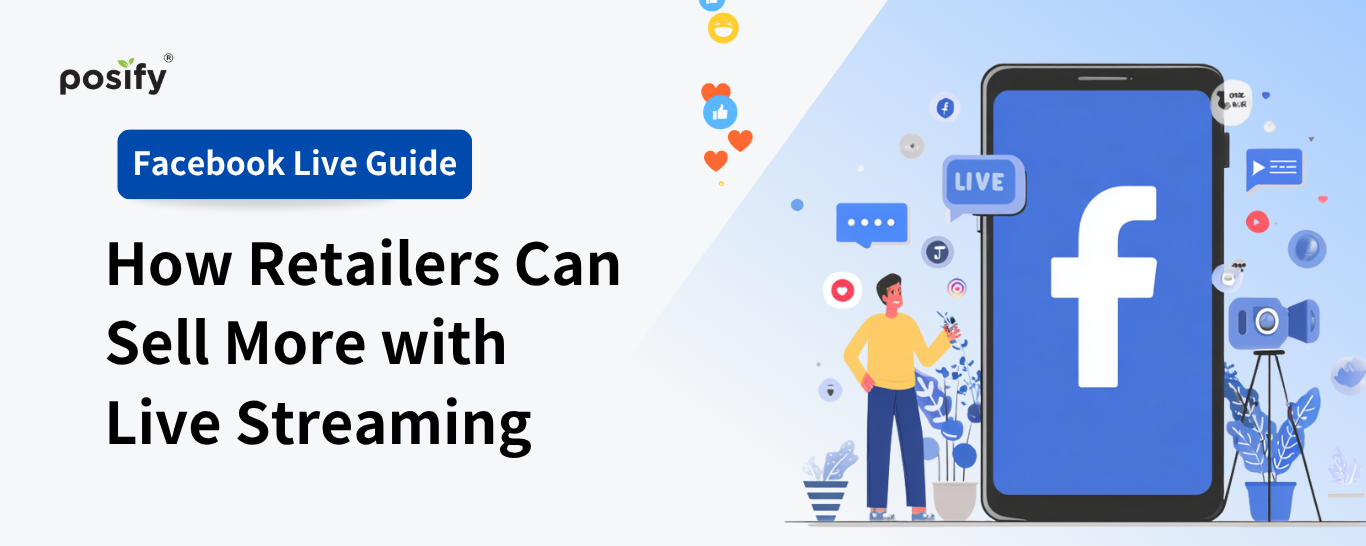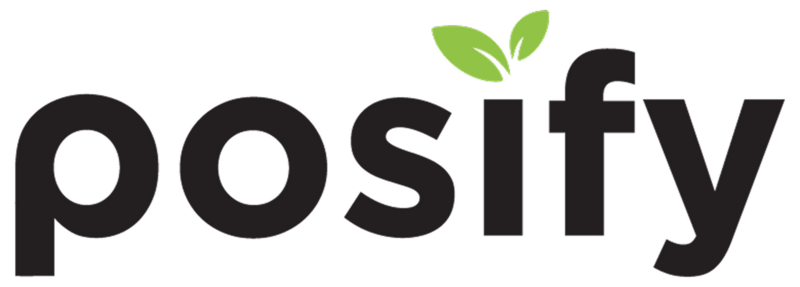Facebook Live Guide: How Retailers Can Sell More with Live Streaming

In the wave of digital marketing, Facebook Live has evolved from a simple engagement tool into a powerful and highly effective sales channel. For retailers, live streaming is not just about “showing products”—it’s a way to engage directly with potential customers, respond in real time, build trust, and drive instant purchases. Especially in the post-pandemic era, more consumers are making buying decisions online, and leveraging Facebook Live has become a crucial key to unlocking new revenue growth.
In this guide, we’ll walk you step-by-step through how to apply Facebook Live in a retail context, covering everything from pre-broadcast preparation (content planning, script writing, and equipment selection), to live execution strategies (attention-grabbing intros, viewer interaction, and product presentation pacing), and finally, post-stream optimization (replay strategies, analytics, and remarketing techniques). Whether you’re a first-time live seller or an experienced merchant looking to boost your conversion rates, this guide will serve as your essential toolkit for Facebook Live marketing.
The following sections are structured around the full live streaming process, so you can build a professional, sales-driven live experience even from scratch. Ready to start? Let’s begin with how to plan your livestream before you go live.
What Is Facebook Live?
Facebook Live is a real-time streaming feature offered by Facebook that allows users to broadcast live video to their followers or friends using a smartphone, computer, or external camera setup. For retailers, it's more than just a way to showcase products—it's a dynamic sales tool that enables real-time interaction, builds trust, drives engagement, and ultimately boosts conversions.
Unlike pre-recorded videos or traditional advertising formats, Facebook Live thrives on instant engagement. Viewers can comment, ask questions, react, and share the stream in real time, while the host can adapt the presentation on the spot based on audience feedback. This creates a two-way interaction that fosters authenticity and builds stronger emotional connections with your audience—two key elements that influence buying behavior.
Another advantage is Facebook’s algorithm, which tends to prioritize live videos in users’ news feeds. That means you can reach more people organically without having to pay for ads. Plus, after the live broadcast ends, the video stays on your page, giving future visitors a chance to rewatch it—extending its impact and giving it “long-tail” marketing power.
In short, Facebook Live combines content marketing, social engagement, and direct selling into one powerful platform. Mastering it allows you to connect with your customers on a deeper level, increase brand stickiness, and improve your chances of converting viewers into buyers.
Facebook Page vs. Personal Profile — Which Is Better for Going Live?
One of the most common questions among retail sellers preparing for Facebook Live is: “Should I go live from my Facebook Page or my personal profile?” While there’s no one-size-fits-all answer, the right choice depends on your business goals, brand positioning, and how you engage your audience. Both options offer distinct benefits and limitations.
1. Advantages of Using a Facebook Page for Livestreaming
For most businesses, the Facebook Page is the preferred platform for live streaming, due to the following reasons:
-
Professional Branding: Pages allow for consistent branding with your logo, business hours, store links, and contact information—helping build customer trust.
-
Analytics & Insights: After the stream, you can access detailed metrics like reach, views, engagement, and click-through rates to evaluate and improve future content.
-
Ad Retargeting: You can use the livestream video for paid ads or create custom audiences based on viewers who engaged, increasing sales potential.
-
Team Collaboration: Pages support multiple admins and editors, making it easier to manage livestream scheduling, responses, and promotions as a team.
2. When to Consider Going Live from a Personal Profile
While a Page offers a more professional presence, there are cases where a personal profile (set to professional mode) is more suitable, especially for:
-
Higher Early Reach: Facebook tends to prioritize personal livestreams to friends and followers, which can help gain quick traction when your Page audience is still small.
-
Solo or Small Brands: If you’re a solopreneur, craft seller, or just starting your online store, a personal profile feels more casual and helps create closer audience connections.
-
Ease of Use: It’s faster to go live from a familiar account without switching roles or pages, and ideal for quick test runs or informal sessions.
What Should You Prepare Before Going Live?
A successful livestream doesn’t start the moment you hit “Go Live”—it starts days before, with careful planning and thoughtful preparation. For retail businesses, the pre-live process directly impacts the smoothness, professionalism, and conversion results of the entire stream. Let’s break down the essential prep work into four key areas:
1. Essential Requirements and Account Preparation
Before you start your live broadcast on Facebook, there are several key account and page requirements that every retailer must meet. These prerequisites ensure that the live streaming feature functions properly and help you avoid technical or permission-related issues during your broadcast.
First, your Facebook account must have been active for at least 60 days. This rule helps Facebook prevent misuse of live streaming by verifying the authenticity and security of accounts. If your account is newly created, you might not have immediate access to the live feature, so it’s advisable for retailers to set up and engage their accounts well in advance.
Second, your Facebook Page or personal profile (set to professional mode) needs to have a minimum of 100 followers. Facebook restricts access to the live feature to accounts with an established follower base to encourage community building before going live. For retailers, this serves as a reminder to nurture your audience steadily before launching live sales to maximize your reach and engagement.
Lastly, if you plan to start your live stream from a Facebook Page, you must hold either Admin rights or Content Creator (Editor) permissions for that Page. This ensures only authorized personnel can broadcast, protecting the security of your brand’s presence. Typically, store owners or social media managers will have these permissions. If you don’t have the necessary rights, coordinate with your Page admin to get authorized.
2. Define Your Objective and Theme
What is the purpose of this livestream? Are you launching a new product, running a clearance sale, building brand awareness, or collecting leads? Clarifying your objective helps shape the content and tone of your live session. Stick to one clear goal per stream to keep the message focused and compelling.
3. Draft a Script and Live Rundown
While spontaneity is part of live streaming’s charm, going in without a plan often leads to awkward silences or aimless chatter. Create a basic outline of your flow: introduction, product showcases, viewer interaction moments, special offers, and a strong closing. You should also prepare answers to common viewer questions in advance.
4. Choose the Right Equipment and Environment
Clear video and stable audio are the baseline for professional live content. Use a tripod for your phone, an external microphone for better audio, and a ring light to enhance lighting. Pick a quiet, well-lit space with minimal distractions so your audience can focus on you and your products.
5. Promote and Build Anticipation
Even the best livestream won’t succeed if no one knows about it. Start teasing your stream 1–3 days in advance: post countdowns on Stories, create an event page, publish teaser posts, and consider a giveaway to boost engagement. Set up the livestream link early and remind followers to RSVP or turn on notifications.
Livestreaming isn’t a casual performance—it’s a strategic sales event. With proper preparation, you not only reduce anxiety but also project professionalism that builds trust and motivates purchases.
.png)
How to Introduce Products or Services During a Live Stream?
When presenting products or services during a Facebook Live session, the goal is not to "push the sale," but to position the product as the natural solution to your audience’s needs. Viewers respond better when they feel you're genuinely recommending something helpful, rather than delivering a sales pitch. Here's how to integrate product showcases effectively:
1. Set the Scene Before Selling
Instead of jumping straight into “Here’s what we’re selling,” start with a relatable scenario. For example: “It’s been super hot lately, and I’ve been using this mini fan every day—it’s a lifesaver!” or “A lot of customers ask me how to fix dry skin, so today I’m sharing my top 3 hydrating favorites.” This approach lowers viewer resistance and creates emotional connection.
2. Demonstrate the Product—Don’t Just Describe It
Listing features isn’t enough. Let viewers see, hear, and imagine how the product works in real life. Open it on camera, show how it's used, describe how it feels in your hands, what it smells or sounds like, or how big it is. Visual context is far more persuasive than just reading off specs.
3. Use Audience Questions to Drive Product Discovery
Encourage your viewers to leave questions or comments during the stream. Then, use those questions to lead naturally into product explanations. For instance: “Can it hold ice all day? Great question—let me show you right now.” This real-time interaction creates engagement and draws attention to the product’s benefits in action.
4. Offer Time-Limited Deals and Stream-Only Bonuses
Leverage the “now or never” dynamic of live video by offering exclusive, time-limited deals—like discounts, free shipping, or bonus gifts. Use countdown timers, comment-based giveaways, or code words for eligibility to drive urgency and audience participation.
5. Maintain a Balanced Pace and Flow
Don’t overwhelm your viewers by showcasing too many products in a row. For every one or two products, pause to recap, interact with the audience, answer questions, or simply chat. This keeps the energy dynamic and helps prevent drop-off in viewership.
Remember, livestreaming isn’t about replicating a shopping channel—it’s about authentic, meaningful interaction that builds trust and connection. If your product showcase feels like a conversation, not a commercial, your audience is far more likely to convert.
Turn Facebook Live Into a Growth Engine for Your Retail Business
Facebook Live is more than just a digital marketing trend—it’s a powerful, low-cost, high-engagement sales tool for retailers. With the right preparation—from account setup and gear selection to content planning and product integration—every part of your livestream can help boost conversions and build authentic brand trust.
But beyond the tactics, live video allows you to connect with your customers as a person, not just a brand. In today’s crowded marketplace where people scroll past ads in seconds, what stands out is not just pricing—but presence, personality, and genuine interaction. And that’s where live streaming shines.
If you haven’t started live selling yet, now is the perfect time. Begin with simple interactive streams, gradually build out your scripts and promotional rhythm, and develop a live style that feels true to your brand. If you already have experience, think about how to integrate your livestreams with your store, loyalty program, and e-commerce platform for a seamless omnichannel retail strategy.
At Posify, we provide all-in-one retail marketing tools that connect livestreams with your POS, customer management, and loyalty data—so every livestream becomes more than a moment—it becomes measurable, repeatable growth.
Ready to turn your livestreams into real results? Let’s start today.





